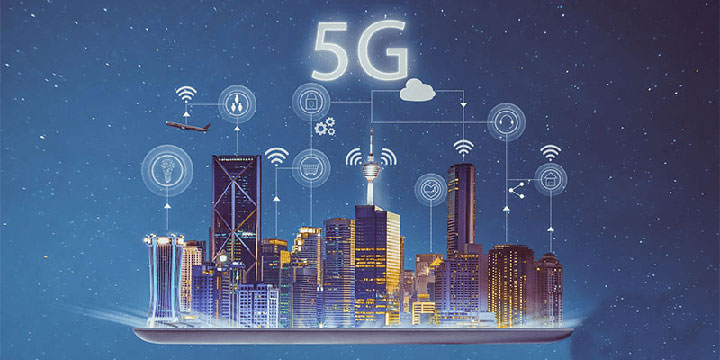5G and the Role of Flash Controllers
With people in lockdown during the current pandemic, access to online resources has become even more important for remote working, virtual meetings with friends, streaming videos and online schooling. This highlights the value of the latest mobile network standard, 5G, which supports both higher data rates and larger numbers of connected devices. This new communications infrastructure has implications both for mobile applications and technology requirements, in particular flash memory.
In addition to improvements for existing uses of mobile data, completely new applications will emerge as 5G becomes ubiquitous. Some of these will be based on combing high-speed data with artificial intelligence (AI).
Applications
We have already seen the widespread use of AI in intelligent assistants such as Siri and Alexa. Similar algorithms using machine learning techniques are used for identifying faces in photographs, translating from one language to another, and making recommendations based on past behavior.
Our phones don’t have the processing speed or data storage to handle these tasks themselves. So they rely on offloading the work to servers in the cloud – computers with the necessary processing power and access to vast amounts of information. These applications are still limited by the speed at which data can be transferred to and from your smartphone and, more importantly, by the delays or “latency” in those transfers. 5G will lower these barriers to emerging applications.
The ability to rapidly transfer large amounts of data can also be valuable in medical applications such as telemedicine. For example, it can enable consultations via video, or the sharing of high-resolution X-ray images or MRI scans to assist in remote diagnosis.
Infrastructure
The 5G infrastructure has to meet very demanding technical requirements.
Base stations need to provide 24/7 operation with service-level agreements specifying availability of 99.999%. This corresponds to a maximum downtime of only 53 minutes in a whole year. A single failure requiring a service technician could mean that target is not met. Many base stations are not easily accessible, and the travel time alone could exceed the time allowed, even before the time for diagnosing the fault and carrying out the repairs.
Because of the high data rates, low latency and high connection density 5G is also being adopted for large-scale private networks. It can provide connectivity to the Industrial Internet of Things (IIoT). It can provide communication both between the machines on the factory floor and also to the higher-level monitoring and management systems.
Reliable operation is also essential for manufacturing environments. These systems must meet similar quality of service standards as public mobile communication networks.
Hyperstone’s flash controllers are ideally suited for these demanding applications.
They provide high levels of reliability over the lifetime of the device with advanced error correction. Advanced algorithms for wear levelling and other essential background tasks help to maximize the lifetime of flash storage devices.
Base stations typically boot from eUSB flash drives and it is essential that these are robust to power failures. Unexpected loss of power must not result in data loss or corruption that could prevent the system rebooting when power is restored. Hyperstone controllers use several mechanisms to provide protection against this. For example, supply voltages are continuously monitored and if they fall below a critical threshold, all pending writes to the flash memory are performed to ensures that no data is lost.
Mobile base stations are installed at remote locations outdoor all over the world, from Greenland to the Sahara Desert. Hyperstone controllers are available as industrial grade devices to guarantee reliable operation over the required temperature range.
Another important feature is low power consumption, as some base stations depend on back-up battery power to cover power outages. To maximize battery life, every watt counts.
Not surprisingly, Hyperstone flash controllers have a major part to play in the roll out of 5G.

